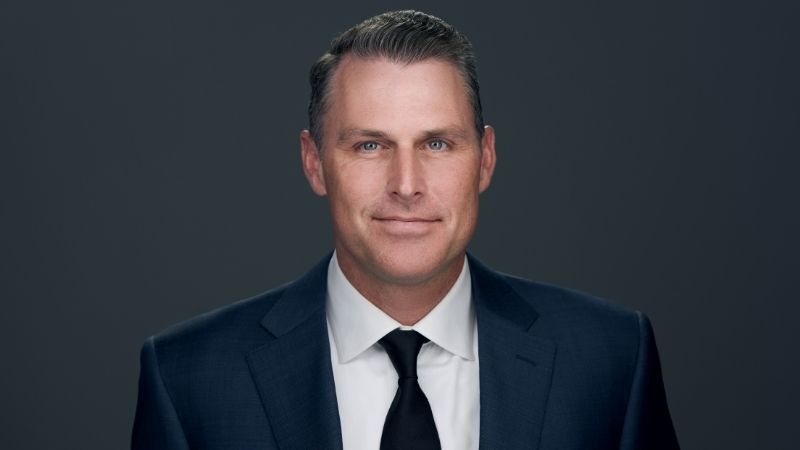Doug Truax, CEO and founder of Everlong Captive Health Insurance, said the healthcare system needs to be transparent for customers after a 2019 statement by Health and Human Services (HHS) Secretary Alex Azar was released concerning healthcare costs.
"At Everlong, we take the current captive model used in the business liability world, modify its structure and improve its performance, enabling us to turn back the tide of ever-increasing medical insurance costs caused by lack of control and transparency," Truax told Indiana Business Daily. "At Everlong, we are able to turn back the tide of ever-increasing medical insurance costs caused by lack of control and transparency using our unique captive cell insurance model."
Azar spoke on the issue in 2019 while then-President Donald Trump made an administrative push to lower healthcare costs that have seen significant increases in recent years. Trump signed an executive order in June 2019 that required such price transparency, but there was concern at the time about how those regulations would be enforced and upheld.
“No American should be going bankrupt due to the cost of healthcare services,” Azar told the group representing large U.S. employers.
The cost of health services and prescription drugs “should be accessible, transparent and, to the extent possible, predictable,” he said. “We need new levels of competition in healthcare so that market forces can increase quality and drive down costs, just like they do throughout the rest of our economy. We need transparency around price and quality so that individual consumers and, in some cases, third-party payers can drive that transformation.”
Trump's order was one of many attempts to push the healthcare system toward price transparency, but most have been unsuccessful. Before the order, the Centers for Medicare and Medicaid Services (CMS) proposed an international pricing model for setting Medicare Part B payout for particular drugs in October 2018.
Another attempt began at the start of 2021 with the Hospital Price Transparency Rule, which required hospitals in the U.S. to provide pricing information online about services they offered and costs. According to OneDigital, only 14% of hospitals met the Price Transparency Rule compliance requirements by the end of 2021. Some said the penalties of $300 a day and $100,000 were too low. In 2022, the penalties were changed to $5,500 per day, or $2 million per year.
In addition, insurance companies were to disclose out-of-pocket expenses up front, which would allow customers to compare prices of procedures, and Care Compare was launched for patients to see an estimate of their cost before their visits. According to the Centers for Medicare & Medicaid Services, Care Compare also created a redesigned Medicare Plan Finder, made patient information able to connect to apps or access their information electronically and made the first-ever Medicaid & CHIP Scorecard to provide feedback on how well Medicaid served its beneficiaries, as well as other changes.
By February 2022, a year after the requirements were put into place, only 1,000 hospitals were found to be compliant of the regulation, according to a report by Revcycle Intelligence. Another report, which built on the first one, said that only 500 hospitals, or 5.6% were in compliance with the regulation.
The main area of non-compliance was failure to post a complete machine-readable file of standard charges, which 85% of hospitals did not do. Similarly, 84.9% of hospitals did not provide national drug codes and the associated prices for the drugs and pharmacy items the health system offered, the report added. About 600 hospitals did not publish an adequate amount of negotiated rates, while 586 hospitals did not post all payer-specific negotiated charges that the rule requires. Compliance was slightly higher for the price estimator requirement, with 84% of hospitals publishing a price estimator tool. However, 20% of these hospitals did not allow uninsured or self-pay individuals to view discounted cash prices, which violates the rule, according to a PatientRightsAdvocate.org survey.
The transparency in coverage rule took effect in July 2022, which states that payers with a "shared savings with consumers would factor into medical loss ratios. Payers would also have to publish their negotiated, in-network rates, out-of-network provider payments and the negotiated and historical rates for prescription drugs by pharmacy site," according to HealthPayer Intelligence.
“The insurer price transparency rule would make public additional pricing data, including in-network negotiated rates and historical net prices for all covered prescription drugs at the pharmacy location level,” said a study conducted on behalf of America’s Health Insurance Plans (AHIP).
Matt Eyles, president and CEO of AHIP, said the needs and expectations of customers were clear.
“When it comes to transparency in healthcare, patients overwhelmingly want two things – for the information to be clear, concise and customized, and for their privacy to be protected. Any new rules must ensure we protect patient privacy, reduce healthcare costs and get personalized information into the hands of patients,” he told AP News.
Captive health insurers such as Everlong were the first to call for such transparency and healthcare. While company executives have been outspoken about healthcare costs and how transparency would ultimately hope lower that cost, it took until recently for the final parts of the transparency rule to be fully implemented.
The process and reports are already well established as it has already been taking action for cost-effect transparency for years, Truax said.
"Everlong Captive are already taking action with a cost-effective, fully transparent pharmacy benefit manager and an innovative specialty medication program," he said in a news release. "The push for transparency on medical prices between insureds and hospitals is vital. Everlong believes fully in both transparency and controlling costs."

